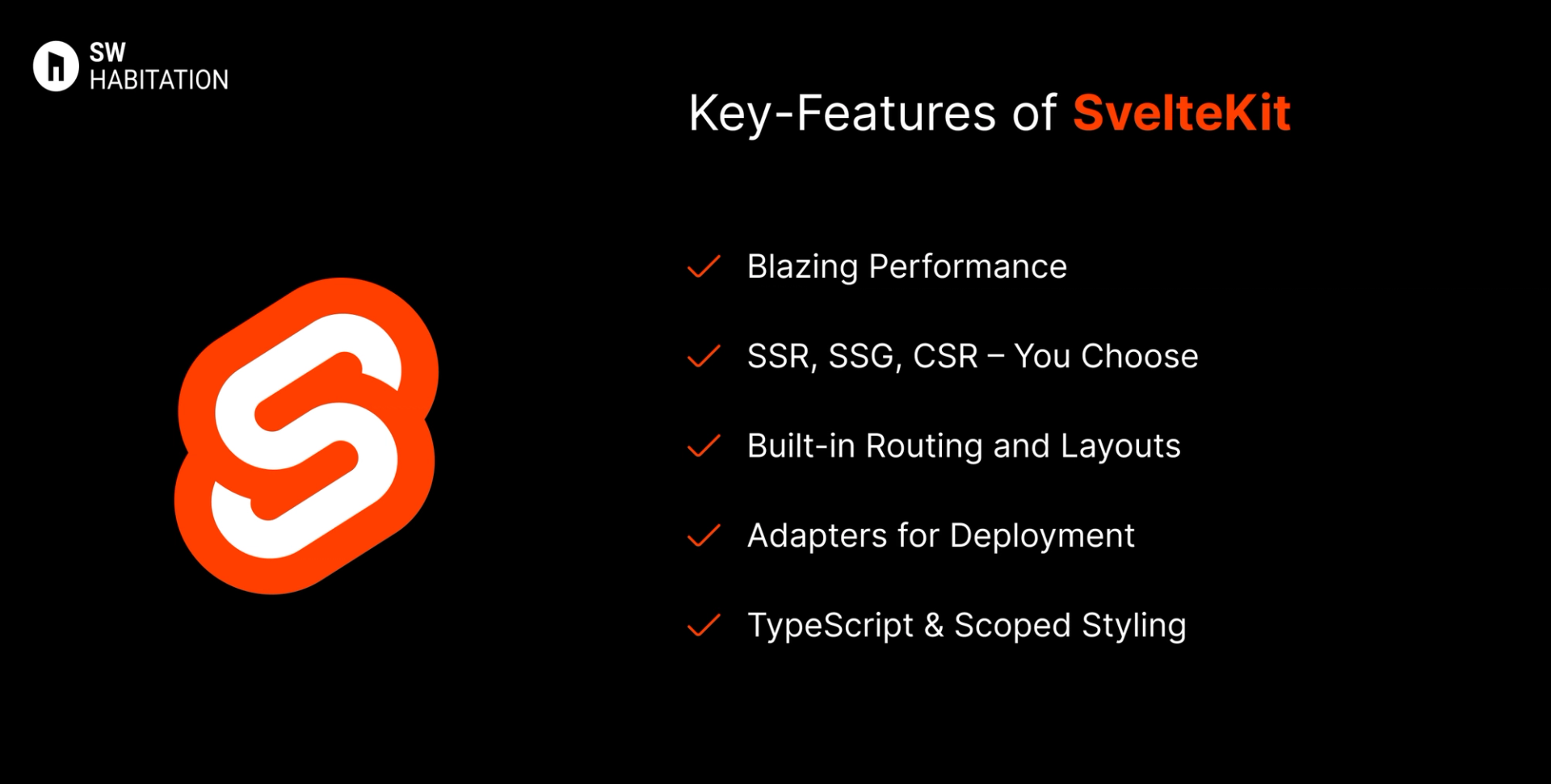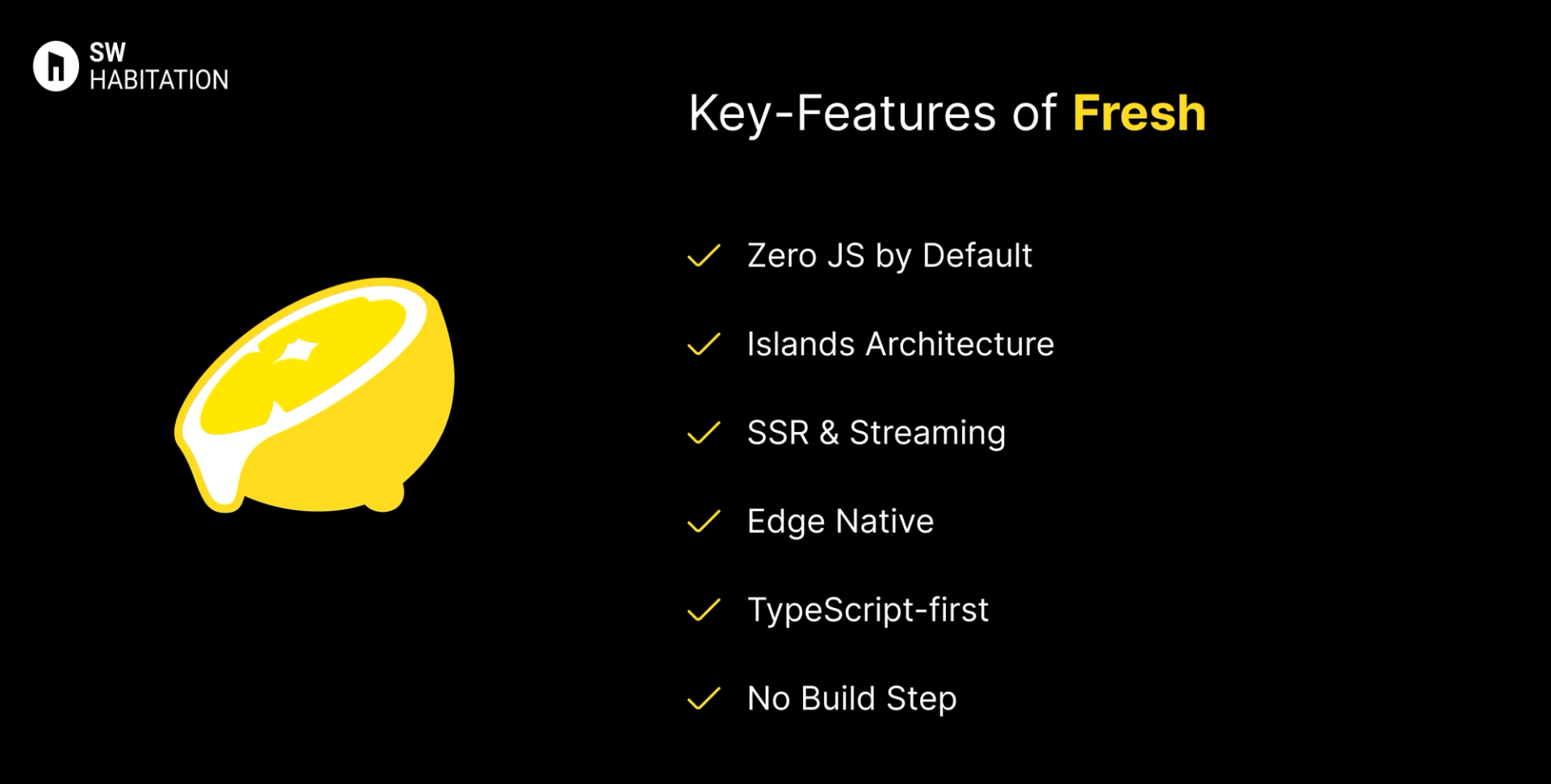SvelteKit vs. Fresh

SvelteKit

Fresh
So, you know when you want to build a website or app, but doing everything from scratch feels kinda overwhelming? That’s where web frameworks come in. They’re like a ready-made set of tools and building blocks that help you get things up and running way faster. Instead of figuring out every little piece yourself, a framework gives you a solid base to build on, and lets you focus on making something cool.
What is SvelteKit?
SvelteKit is the full-stack application framework built for the Svelte (https://svelte.dev/) UI library. Unlike traditional frameworks that run in the browser, Svelte compiles your code to highly optimized JavaScript at build time which means no virtual DOM, minimal runtime, and ultra-fast performance.
SvelteKit brings everything you need to build web apps into one unified toolchain routing, layouts, API endpoints, server-side rendering (SSR), static site generation (SSG), client-side navigation, and more — all with smart defaults and deep configurability.
Key Features of SvelteKit


- Blazing Performance: Thanks to Svelte’s compiler-based approach, apps are lean, fast, and minimal.
- SSR, SSG, CSR – You Choose: Build pages using static generation, server rendering, or client-side rendering per route.
- Built-in Routing and Layouts: File-based routing with nested layouts simplifies app structure.
- Adapters for Deployment: Deploy to any platform — Netlify, Vercel, Cloudflare Workers, Node, or static hosting.
- TypeScript & Scoped Styling: Comes with TypeScript support and CSS scoped to components.
Advantages of SvelteKit
- Minimal JavaScript: Only ships what the user needs, no heavy runtime.
- Unified Experience: Routing, layouts, endpoints, and rendering are all built-in.
- Flexible Deployment: Use adapters to deploy anywhere, from edge functions to static hosts.
- Developer Happiness: Clean syntax, fewer abstractions, and fast HMR (Hot Module Reloading).
- Excellent SEO: SSR and pre-rendering make your content crawlable by default.
Disadvantages of SvelteKit
- Smaller Ecosystem: Compared to React or Vue frameworks, it has fewer plugins/modules.
- Learning Curve for Beginners: Svelte syntax is simple, but newcomers may need time to grasp server/client boundaries in SvelteKit.
- Tooling Stability: While stable, SvelteKit is still evolving and may change more rapidly than older frameworks.
- Advanced Use Cases: Handling complex authentication, authorization, or large-scale caching may need custom solutions.
What is Fresh?
Fresh is a full-stack web framework for Deno that prioritizes zero JavaScript by default and leverages the islands architecture. Instead of hydrating entire pages, Fresh delivers static HTML and only hydrates isolated, interactive "islands" where needed.
Fresh is originally designed for modern edge computing with Deno Deploy, has no build step, and relies on native ES modules and TypeScript. It’s ideal for fast, lightweight, SEO-friendly apps with minimal complexity.
Key Features of Fresh


- Zero JS by Default: Ships no JavaScript unless components explicitly need interactivity.
- Islands Architecture: Interactive components exist in isolated islands for optimal performance.
- SSR & Streaming: Server-rendered HTML with support for streaming.
- Edge Native: Optimized for Deno Deploy and edge hosting.
- TypeScript-first: Built-in TypeScript support without config.
- No Build Step: Instant reloads, no bundling or transpiling.
Advantages of Fresh
- Ultra-lightweight Performance: Minimal JS means faster load times.
- No Build Step: Faster developer iteration; you write, refresh, and go.
- Edge-Optimized: Runs seamlessly on Deno Deploy with serverless scaling.
- Modern Standards: Uses ES modules, TypeScript, and Web APIs directly.
- Simple DX: File-based routing, components, and islands make development intuitive.
Disadvantages of Fresh
- Deno Only: Requires Deno runtime, limiting adoption among Node.js developers.
- Smaller Ecosystem: Fewer third-party libraries and integrations.
- Early Stage: Still maturing, not as widely adopted as Next.js.
- Custom Solutions: Some features like authentication or CMS integrations need manual setup.
Comparison Between SvelteKit vs Fresh
Use Cases of SvelteKit
- Technical Blogs & Portfolios
- Dashboards & SaaS Platforms
- Marketing Websites
- E-commerce Sites
- APIs & Endpoints
Use Cases of Fresh
- Marketing Websites: Pre-rendered, SEO-optimized pages with minimal JS.
- Blogs/Portfolios: Static sites with optional interactive islands.
- E-commerce Landing Pages: Server-rendered product data with interactive carts as islands.
- Edge-native Apps: Applications running globally on Deno Deploy.
Other Resources
Conclusion
Web frameworks make building websites and apps a whole lot easier. Whether you’re working on a personal project or something big for work, they help with the heavy lifting—like routing, design structure, and how everything connects.
With support for things like server-side rendering, optimized performance, and developer-friendly features, these tools let you create faster, smarter, and cleaner websites. Just pick the one that fits your style, and start building something awesome 🚀
Frequently asked questions
Is SvelteKit production-ready?
Yes. SvelteKit reached 1.0 stable in late 2022 and is now considered production-ready. Many companies are already using it for production apps.
Can I migrate my existing Svelte app to SvelteKit?
Yes. You can move your Svelte components into a SvelteKit project and then set up routing, data loading, and server logic. The migration is straightforward but may require some restructuring.
Does SvelteKit support TypeScript?
Yes. TypeScript support is built-in. You can enable it when creating your project with npm create svelte@latest.
Which rendering modes does SvelteKit support?
SvelteKit supports SSR (Server-Side Rendering), SSG (Static Site Generation), CSR (Client-Side Rendering), and even hybrid setups in a single app.
Is Fresh production-ready?
Yes. Fresh is stable and actively maintained by the Deno team.
Why does Fresh not need a build step?
It uses native ES modules and Deno runtime, so no bundling is needed.
Can I use npm packages in Fresh?
Fresh relies on Deno’s ecosystem. You can import npm modules using Deno’s compatibility layer.
How does Fresh compare to Qwik City?
Both focus on minimal JS, but Qwik uses resumability, while Fresh uses islands.
Does Fresh support TypeScript?
Yes. Fresh is TypeScript-first out of the box.
